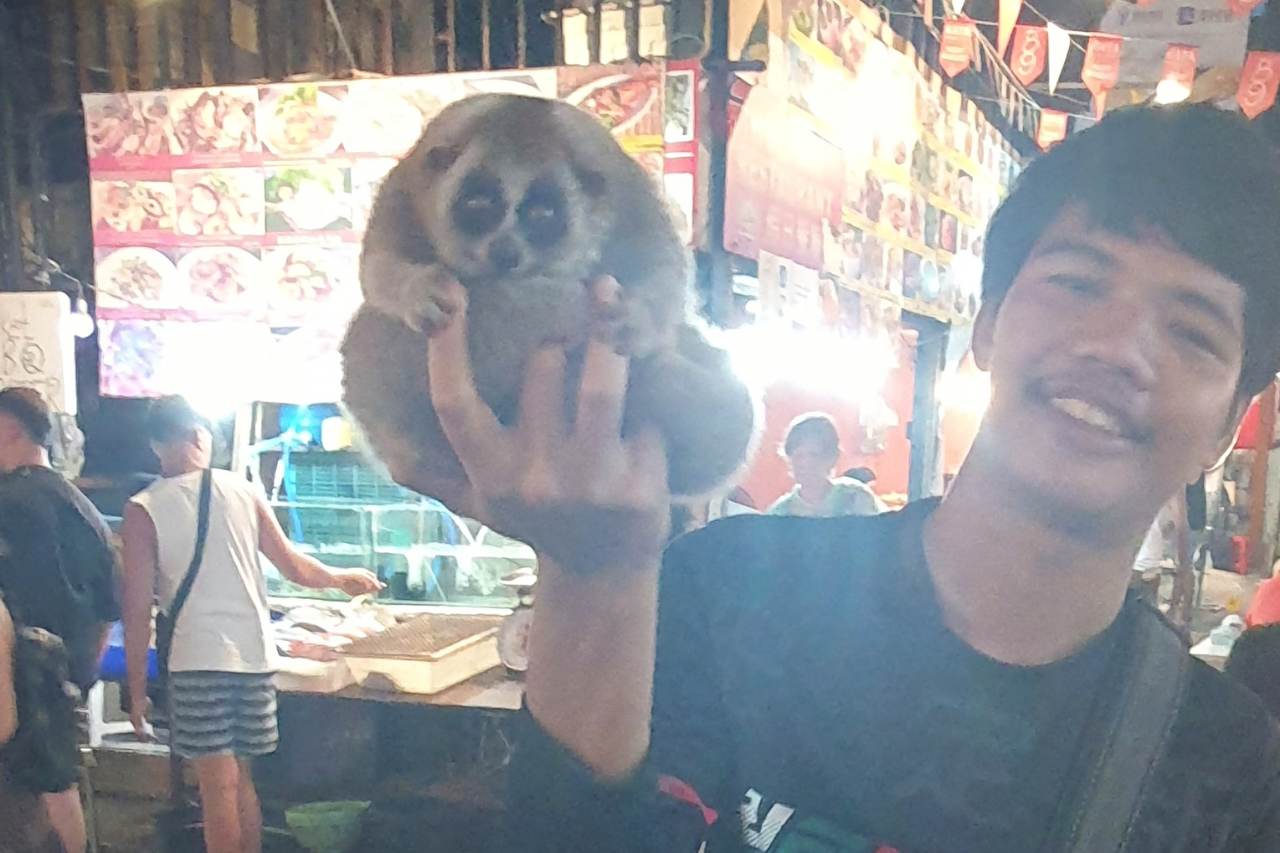It's time to take action—learn how you can help stop this exploitation and protect slow lorises from further harm.
Trio of Rescued Lorises
During April, we’ve continued to see lorises arrive into the rescue centre from many different situations. The first, an adult male, arrived 1 night after being found at the side of the road. While he is under observation he is currently being homed in one of our new loris habitats sponsored by Care for the Wild, awaiting release. The next was a juvenile, approximately 3 months old. Sold as a pet but only kept for a week before the owner decided he didn’t want him any more. He is currently being looked after by Lucy, WFFT’s dedicated vet nurse. The final loris to arrive in April was an adult male attacked by a dog and bought to the rescue centre for treatment. When treatment is completed, his suitability for release back to the wild will be assessed.
Currently, lorises are a fashionable pet throughout South East Asia but as a nocturnal animal soon become boring so are dumped at temples, rescue centers or even into the forest where they are unable to care for themselves after being brought up in captivity. Lorises have sharp teeth and an enzyme that can cause blood poisoning so are a dangerous animal to try and keep.
As the situation for lorises in Thailand become even more desperate, WFFT continues to work with our sponsors, Care for the Wild International, to create habitats, education and release programme for another unsuitable, unwanted “primate pet”.




